Baroque Art in Sculpture: Three Iconic Masterpieces
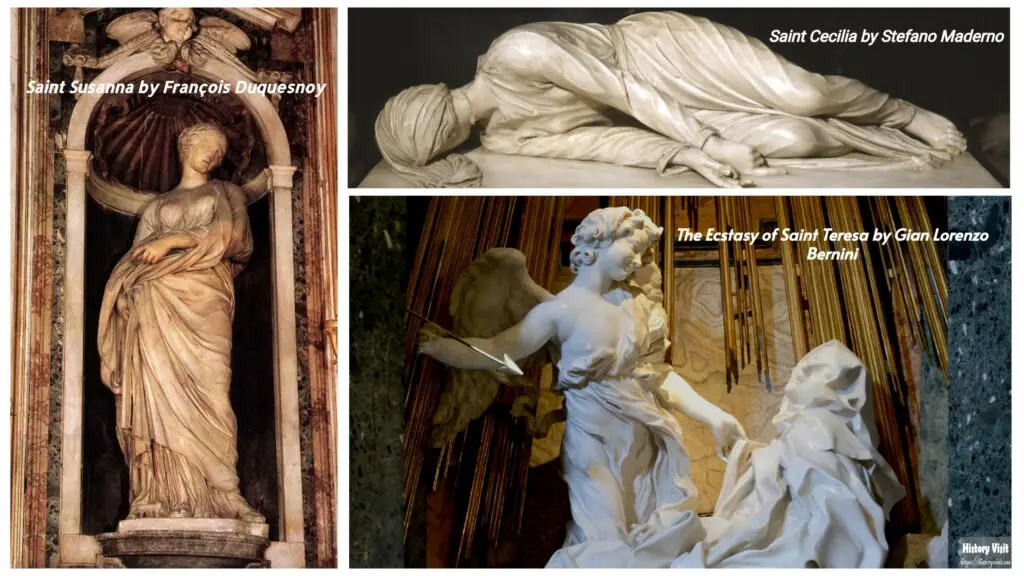
Introduction
Baroque art shaped European culture during the 17th century. It blended emotion, drama, and movement. In sculpture, baroque art captured spiritual power and human passion with bold details and rich forms.
Baroque art was not just about style. It carried religious, political, and personal messages. Artists used marble to tell powerful stories. Each sculpture from this period shows deep feeling and masterful technique.
This article explores three iconic baroque art sculptures. Each comes from a different artist. These works span different times and places but share the same bold spirit. They show how baroque art lives through stone.
Saint Cecilia by Stefano Maderno (1600)
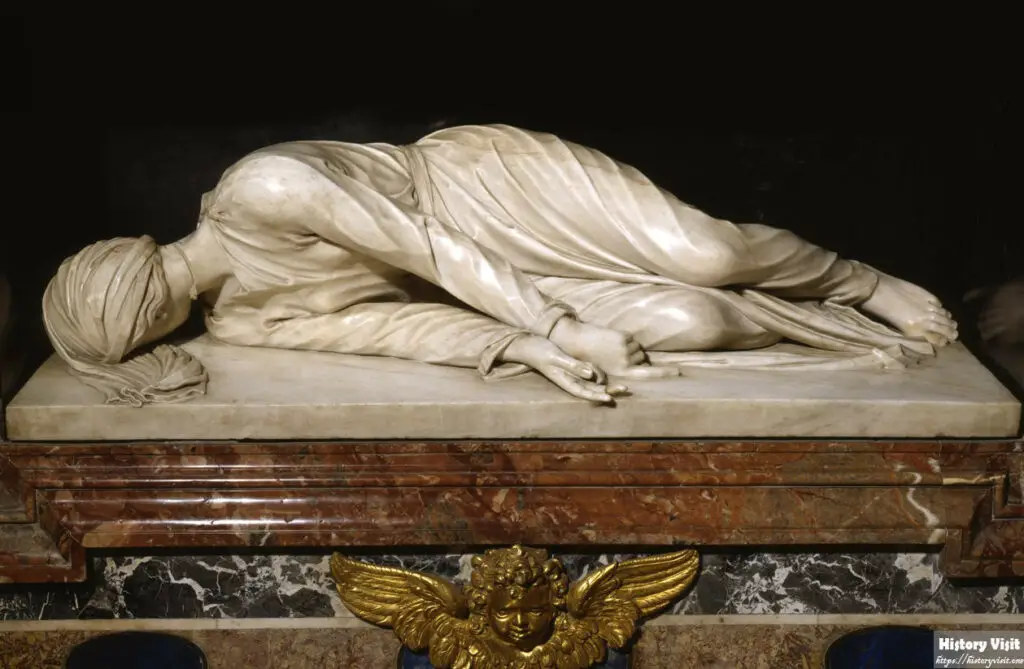
Stefano Maderno created Saint Cecilia around 1600. It rests in the Church of Santa Cecilia in Trastevere. It shows the martyred saint lying on her side.
This sculpture marked the early Baroque period. Maderno sculpted what he said was her real position after death. Her body lies twisted. One finger points to the ground.
Her neck bears signs of execution. Her dress flows gently over her still form. There is no horror here. Only peace and grace remain.
Saint Cecilia began the Baroque art movement. It mixed realism with sacred respect. It told stories with truth and tenderness.
Saint Susanna by François Duquesnoy (1629)
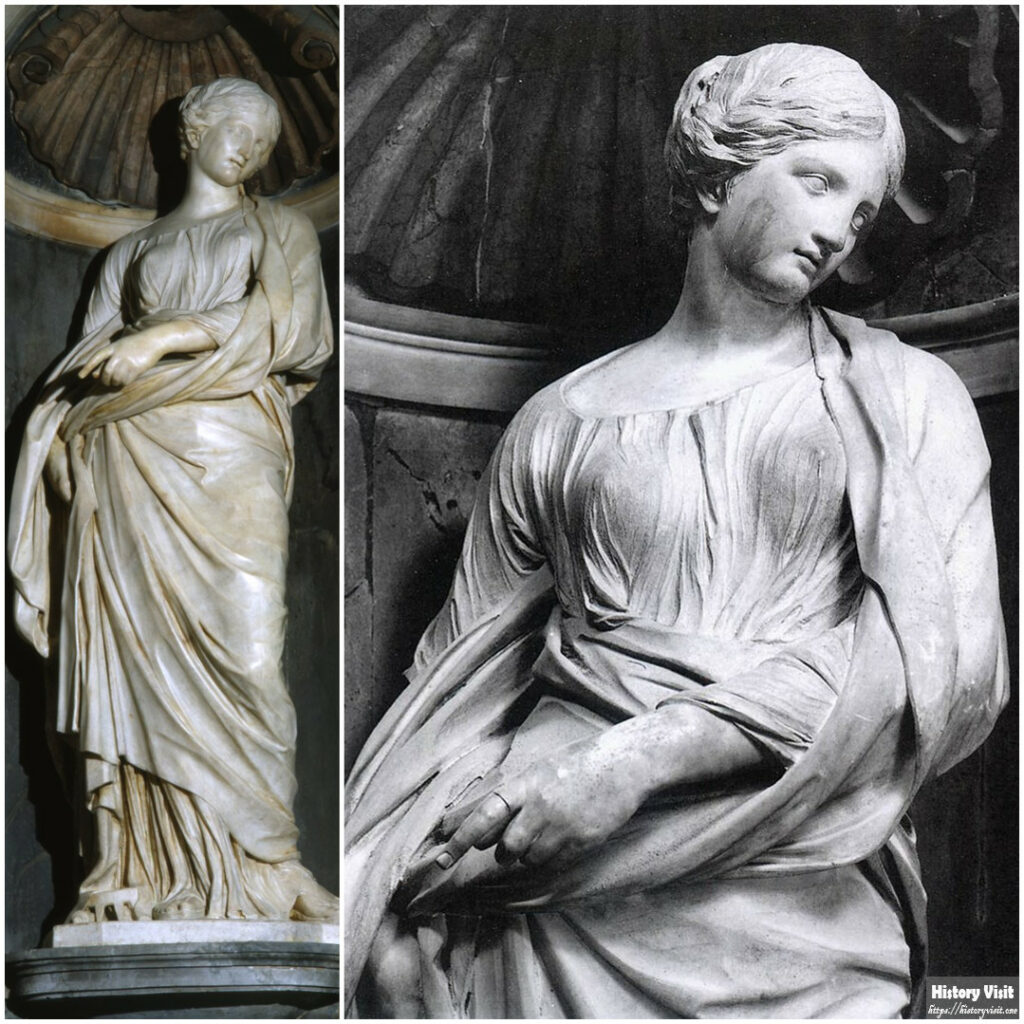
François Duquesnoy was a Flemish sculptor. He worked mostly in Rome. He was known for blending baroque art with classical grace. Saint Susanna, completed in 1629, is one of his masterpieces.
The sculpture shows Saint Susanna standing in a calm pose. Her robes cling softly to her body. Her gaze is serene. This is not a dramatic moment. Instead, it shows quiet strength and spiritual beauty.
Duquesnoy focused on balance and harmony. He carved delicate lines and natural shapes. The marble flows like real cloth. Her body stands with perfect grace. Unlike Bernini, Duquesnoy avoided extreme drama.
Saint Susanna reflects early baroque art. It keeps classical ideals but adds feeling and softness. It shows how baroque could be gentle and poised. The work influenced later sculptors who valued control over excess.
The Ecstasy of Saint Teresa by Gian Lorenzo Bernini (1652)
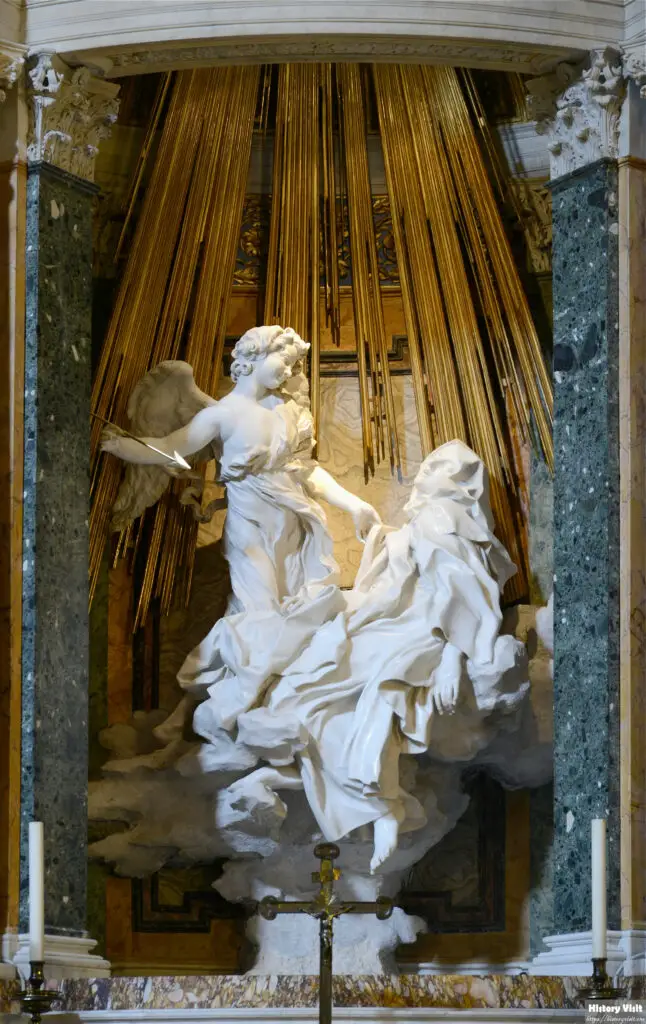
Gian Lorenzo Bernini was the leading sculptor of baroque art. His work defined the style. One of his finest pieces is The Ecstasy of Saint Teresa, completed in 1652. It sits in the Cornaro Chapel in Rome.
The sculpture shows Saint Teresa in a moment of divine vision. An angel pierces her heart with a golden arrow. Her body reacts with intense emotion. The folds of her robe swirl like waves. Her face shows pain and joy together.
Bernini used marble to show softness and motion. The angel’s robe floats like fabric in wind. Saint Teresa’s expression looks alive. He also designed the chapel space around the sculpture. Light falls from hidden windows above. It looks like heaven opened.
This work blends sculpture, architecture, and theatre. It creates a full baroque experience. The sculpture invites viewers to feel, not just to look. It reflects Catholic faith, divine love, and human emotion. Bernini’s baroque art reaches its peak here.
The Rise of Baroque Art in Sculpture
Baroque art grew from the needs of the time. The Catholic Church wanted art to inspire faith. Artists answered with bold, emotional works. Sculptures became tools of teaching and awe.
Baroque art also reflected politics. Rulers used grand statues to show power. Churches used them to show glory. The mix of spirit and state helped baroque grow.
Sculptors shaped marble like it was soft clay. They carved deep folds, tense muscles, and dramatic gestures. They created scenes, not just figures. Viewers felt part of the moment.
This shift changed sculpture forever. Baroque art made stone feel alive. It added story and passion to form.
Emotional Depth and Movement in Baroque Art
Baroque sculptures often show extreme emotion. Artists used faces and bodies to express feeling. Pain, joy, faith, and fear all appear.
Bernini led this approach. But others, like Giambologna and Duquesnoy, added their own vision. Each artist showed how emotion could live in stone.
Movement was key. Figures twist, reach, or collapse. Nothing is still. Even in calm works, like Saint Susanna, a quiet motion flows.
Emotion and movement turned viewers into witnesses. They felt the moment. That was the power of baroque art.
Light and Space in Baroque Sculpture
Baroque artists played with light. They carved deep shadows and soft highlights. This made marble look like skin or fabric.
Bernini even built light into architecture. In The Ecstasy of Saint Teresa, hidden windows create divine rays. It looks like God touches the sculpture.
Space mattered too. Sculptures were placed in chapels, corners, and altars. They worked with the room. They created drama.
Light and space made sculpture more than shape. They turned it into an event. They deepened the baroque experience.
Legacy of the Three Sculptures
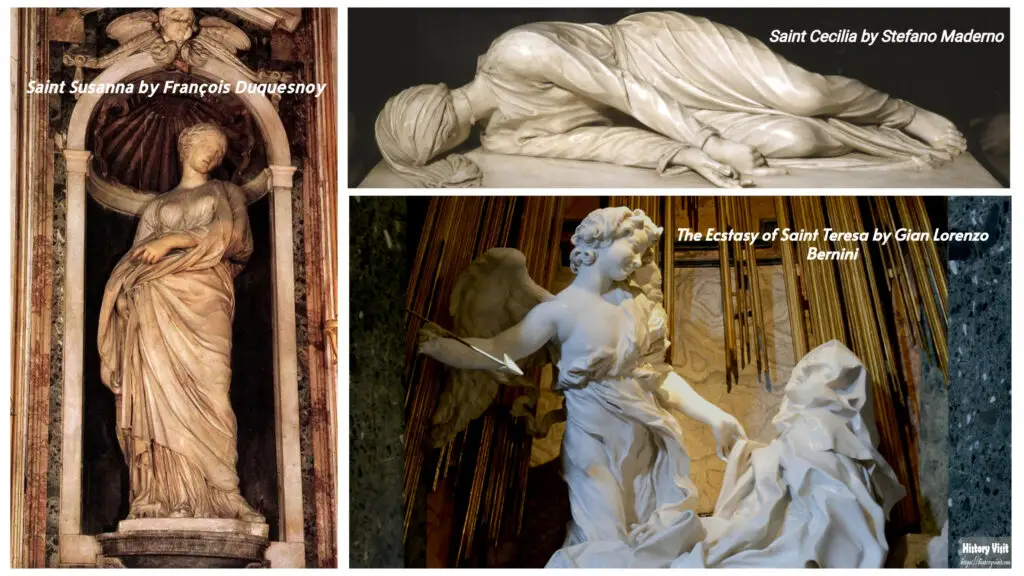
Each sculpture shaped future art. Bernini set the gold standard for baroque art. Others copied his style for decades.
Duquesnoy offered a calmer path. His grace and balance were also copied. Many found inspiration in his control.
Giambologna stood between two worlds. His work links the past and future. He opened doors for new ideas.
These three artists shaped sculpture in different ways. Together, they built the soul of baroque art.
Baroque Art and Modern Viewers
Today, people still admire baroque sculptures. They appear in books, photos, and films. They draw crowds in churches and museums.
Viewers feel the same emotions. The drama, beauty, and skill still speak. The marble still moves hearts.
Artists study these works. They learn about form, feeling, and faith. The sculptures still teach.
Baroque art stays alive through time. Its spirit is timeless. Its power still works.
Conclusion
Baroque art changed sculpture. It gave stone emotion and motion. It turned art into a story.
These three sculptures show its power. From Bernini’s passion to Duquesnoy’s grace to Giambologna’s strength, baroque art lives.
The style mixed heaven and earth, spirit and flesh. It carved feeling into marble. It still speaks, centuries later.


